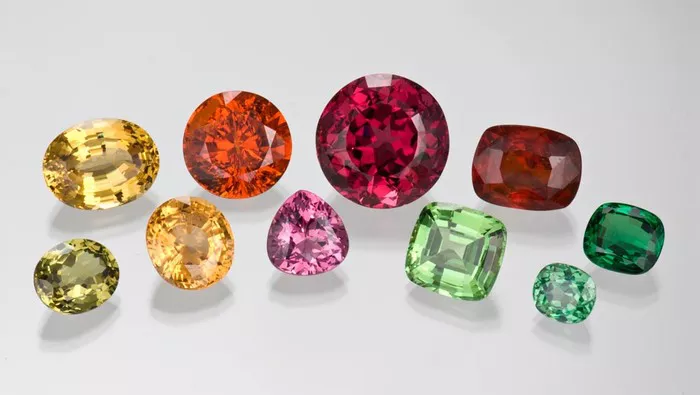Amidst the laborious efforts of artisanal miners toiling in the gemstone fields of the Tsavo landscape, a time-honored legend tells of a treasure that bestows its discoverer with unmatched blessings. This cherished gem is none other than the illustrious Tsavorite, revered as the Holy Grail in the realm of precious stones. For gemstone enthusiasts and collectors worldwide, the Tsavorite represents the pinnacle of their endeavors, the ultimate prize to adorn their collections.
“Tsavorite remains the most coveted gem among miners and dealers due to its rarity and extraordinary value. It’s considered a quintessentially Kenyan treasure, as it’s exclusively found in Taita-Taveta county,” asserts David Zowe, Chair of the Taita-Taveta Artisanal Miners Association.
Renowned for its resplendent green hue, Tsavorite has outshone all other precious stones, acquiring a regal status. For miners, it’s not merely a mystical gem turning paupers into millionaires; it’s the long-anticipated gateway to boundless riches.
Taita-Taveta county, as a region, boasts a wealth of semi-precious and precious stones, including rubies, amethyst, tourmalines, kyanites, red garnets, and peridots, among others. The region also holds other industrial minerals like iron ore, quartz, and manganese. However, no other mineral has captured the collective imagination of miners in the region and beyond as the Tsavorite has.
Tsavorite symbolizes the immense potential of the region to become a global mining hub, offering the promise of transforming the lives of thousands of residents currently mired in poverty. According to the 2021 Poverty Report from the Kenya National Bureau of Statistics (KNBS), Taita-Taveta county carries a 33.9% poverty index, slightly lower than the national average of 38.6%.
Despite being a multi-billion-shilling industry, the mining sector’s wealth and revenue have failed to translate into improved living standards for local residents. The sector hemorrhages millions annually due to rampant tsavorite smuggling, lack of sales disclosure by traders, and the deliberate non-payment of required royalties by dealers and miners to the state.
In a bid to address these challenges, the government recently classified Tsavorite as one of Kenya’s 14 strategic minerals. Strategic minerals are deemed vital to the country’s economic well-being, with importance extending to sensitive sectors such as defense. Other minerals listed as strategic in Kenya include radioactive minerals like uranium and thorium, cobalt, copper, graphite, niobium, and others.
With this newfound classification, Tsavorite seems to have come of age. This designation mandates government sanctioning throughout the entire value chain, from prospecting and exploration to mining, trade, and dealing in this gem.
Mining Principal Secretary, Elijah Mwangi, underscores that those eager to mine Tsavorite will collaborate closely with the National Mining Corporation (NMC) to ensure compliance. He emphasizes that licensing and permit issuance will be assessed on a case-by-case basis.
Mwangi further reveals that the government is taking a stand against the export of uncut gemstones, advocating for the processing of all precious stones destined for the international market. This value addition is expected to fetch miners significantly better prices and enhanced value for their products.
The government’s involvement in the Tsavorite sector has been met with acclaim by artisanal miners who see it as a timely initiative to restore order in an industry marked by unscrupulous local and international dealers. It’s also perceived as a concerted effort by the state to eradicate tsavorite smuggling and compel miners and dealers to operate from the newly-established Sh 50-million Voi Gemology, Value Addition, and Marketing Center.
Stephen Mwadime, Chair of the Mwatate-based Chawia Minerals Community-Based Organization (CBO), voiced his support for these measures, stating, “As artisanal miners, we have no issue with this move if it protects miners from exploitation and makes their efforts more profitable. While dealers and buyers may voice concerns, this initiative will ultimately benefit the miner because the government is now involved.”
Zowe echoes this sentiment, highlighting that the government’s intervention will lead to an increase in annual revenue collected from the gemstone sector. He emphasizes that over the years, the government has suffered significant revenue losses due to a lack of transparency in trade and tax evasion by rogue dealers engaged in multi-million-shilling deals, failing to contribute to the state’s coffers. Taita-Taveta county’s share of mining royalties from the national government has been disproportionately meager due to these issues.


